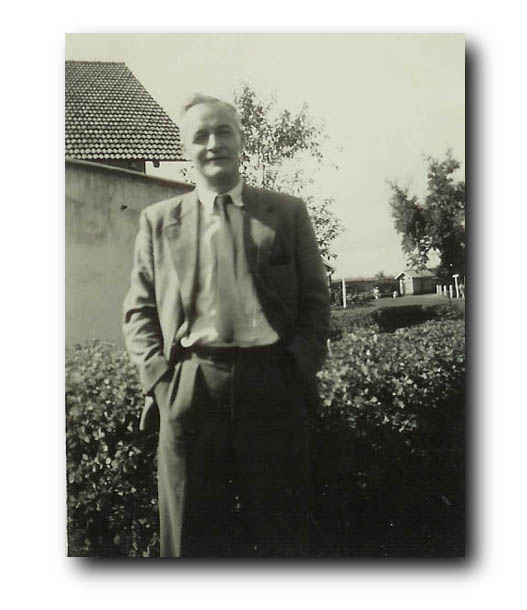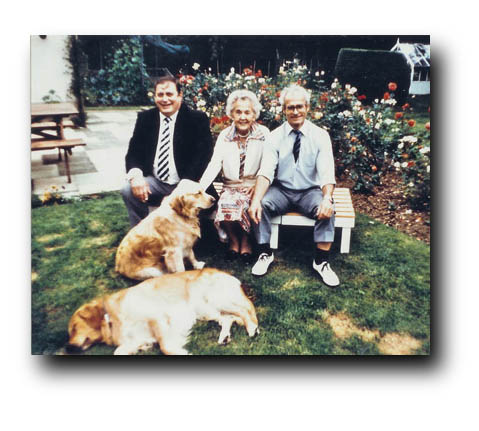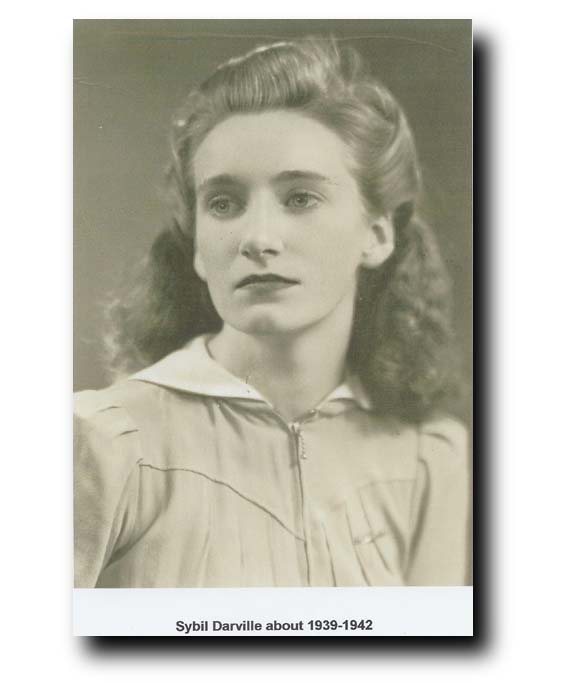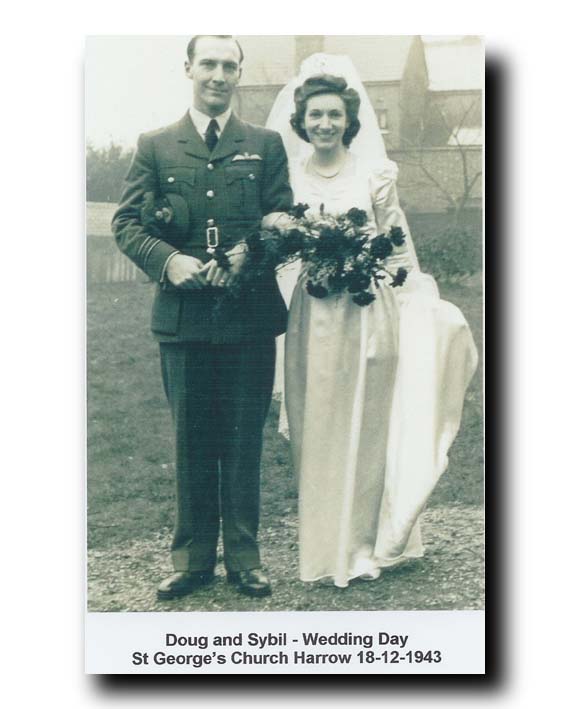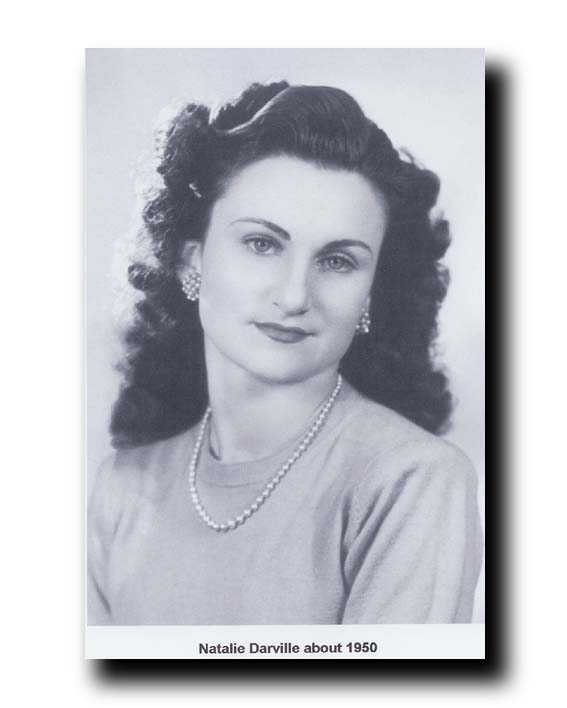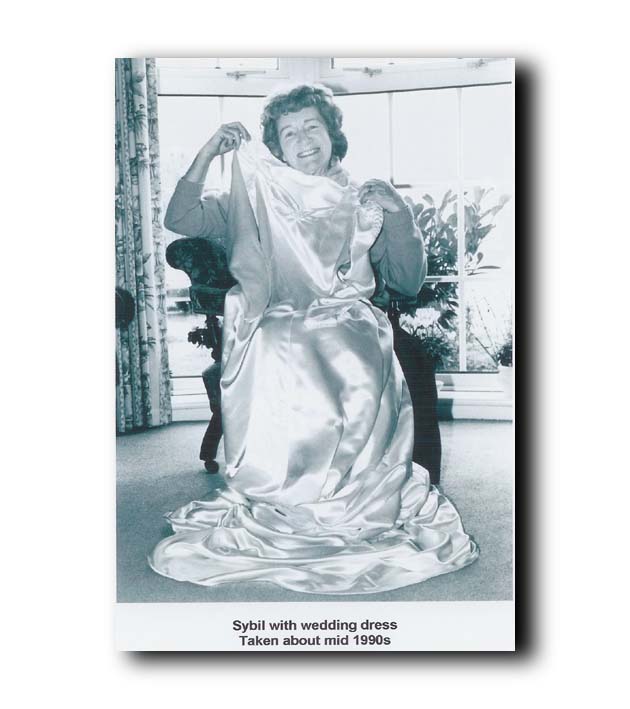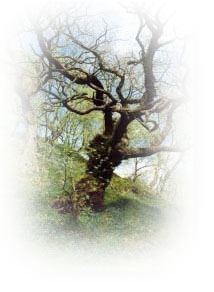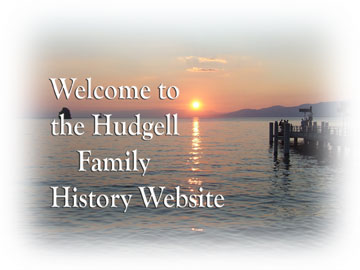
|
Escape from Singapore by David Hudgell
With the kind permission of David Hudgell who with his mother and brother had a terrifying escape from the Japanese when they invaded Singapore
|
|||||||
| The fall of Singapore in February 1942 has been well documented and was described by Churchill as the "worst disaster and greatest capitulation in British History". Not until the very end was it believed that Singapore would fall and it was on 15h February that this happened after lightning Japanese advance down Malaya, the crossing of the Causeway and a week's fighting on the island. The evacuation of civilians and key service personnel from Singapore has been likened to Dunkirk but, whereas Dunkirk, although a retreat, can be considered a great achievement, that from Singapore was mainly a fiasco.
My own family's escape was successful but there were many whose experiences were infinitely worse than ours and the evacuation produced many tales of horror and courage.
My father had lived and worked in Japan for seventeen years, was married there and loved the country. It was in 1940, after the build-up of Japanese militarism and their signing of the Tripartite Pact with Germany and Italy that we were advised to leave. My brother, Robert was actually the last British baby whose birth was registered in Japan. We then went to Singapore.
It was in early February 1942, just before the Japanese forces crossed the Causeway from Johore to Singapore that we were due to fly out but the flight was suspended owing to enemy action. My mother was then give half-an-hour's notice to get down to the docks to catch a ship which was leaving shortly. She just had time to take two suitcases and she, I (4years) my brother (1 year) and an elderly Chinese amah arrived at the docks. My father was left behind and it was not known if we would see him again.
In the words of a graphic letter written home eventually by my mother "..... finally the ship slipped out of the harbour quietly in the early hours of the morning. It was pathetic to look back and see smoke and fires everywhere though, of course it was noting to the inferno that was raging a few days later. A few hours out Japanese planes were sighted overhead and the alarm was given and we were all sent down to the dining saloon under the tables complete with life bets on. The next hour was pretty ghastly - it was hot as blazes and felt worried to death, particularly as i was the only woman with children in board. The noise was terrific with the ship's one and only gun blazing away the whole time and shaking the shop to pieces. They dropped about 15 bombs and one hit us - it was a terrifying few moments and I remember wondering when we were going to find ourselves in the water. The bomb struck us aft in a slantwise direction right through the doctors surgery killing him outright. There were five others killed and about twenty wounded. After that it was just chaos. Fortunately there were many nurses among the passengers and they worked hard all night. Much of the medical equipment was destroyed. There was no sleep for us that night - our cabin was aft and was full of broken glass and fumes and all lights had gone....."
My mother then describes in her letter the next port of the journey across the Dutch East Indies, now Indonesia, from Palembang in Sumatra to Batavia, now Djakarta, in Java as ".... worse than the bombing.....in a strange country, all my trails and tribulations with the children, the feeling of utter aloneness, train journeys through the night in the pitch black, no seats, no food, no sleep, the ferry journey to Java, endless customs formalities, nothing but change, change, change...." In Batavia, my mother heard that my father had escaped from Singapore on one of the very last ships to leave and we met up again a week later - he also had a dramatic time getting out, nearly losing his life.
Finally, we got a ship from Batavia to Sydney arriving in Sydney a total of five weeks from the time we left Singapore. We spent the rest of the war in Australia, returning to England in 1945
DAVID HUDGELL 2004 -------------------------------- David's mums letter: Copy of letter sent by me (Eileen Hudgell) to Auntie Kate on arrival in Australia after escape from Singapore - February 1942 We were booked to leave Singapore by Qantas Plane during the night of February 2nd (1942). Just before 6 o'clock that evening I was putting the children to bed when the telephone rang. It was the Airways people to say that owing to enemy action the plane service was suspended, but if we wanted to get out there was a ship leaving that night and we must be down at the docks at 7 o'clock.
Imagine my dismay, just when we though that everything was fixed and the trip would be over in four days. Sidney was out on duty and I felt that the whole responsibility of going or not rested on my shoulders. I phoned Mr. Fox to see if he could possibly get hold of a car to take us down - he was a brick and helped to calm me down and offered to do what he could. Fortunately at that moment Sidney came in and then and there we decided that in view of everything we must make the effort to catch the ship. If only I had more time - how often we've said that since, I could have taken some of my precious clothes - but as it was we just grabbed up the two suitcases I had packed for the plane, my fur coat and knitting bag with chocs and biscuits, and dashed down. Of course everything was chaotic - Sidney was able to come on board which thrilled me tremendously - and I was also immensely relived to see through the gloom British sailors in the familiar uniform of the B.I. Line - subsidiary of the P. & O. It was awful saying goodbye to Sidney as I had no idea when I should see him again. We thought it meant separation for the duration as at that time we hadn't the faintest idea that Singapore was going to fall. Well, Sidney went off about midnight and finally the ship slipped out of the harbour quietly in the early hours of the morning. It was pathetic to look back and see smoke and fires everywhere though, of course, it was nothing to the inferno that was raging a few days later.
A few hours out - to be exact at dusk that evening Japanese planes were sighted overhead and the alarm was given and we were all sent down to the dining saloon under the tables complete with lifebelts on. The next hour was pretty ghastly - the children couldn't understand why they had to be under the table - it was hot as blazes and I felt worried to death, particularly as I was the only women with children on board. The passengers were mostly Chinese and only about 40 or 50 Britishers and not a soul I knew except one man whom Sidney knew in Japan. The noise was terrific with the ship's one and only gun blazing away the whole time and shaking the ship to pieces. They dropped about 15 bombs and one hit us - it was a terrifying few moments and I remember wondering when we were going to find ourselves in the water. Fortunately we didn't - we were just smothered with smoke fumes and bits of table which splintered, and broken glass.
The bomb struck us aft in a slantwise direction right through the doctor's surgery, killing his outright. There were five others killed and about 20 wounded. You can imagine that after that it was just chaos. Fortunately there were many nurses among the passengers and they all worked hard all night. so much of the medical equipment was destroyed. You can imagine there was no sleep for us that night - our cabin happened to be aft and was full of broken glass and fumes and all lights had gone. Finally a man said I could us his cabin and David slept on a bunk and Robert and I on the floor - at least I didn't sleep at all - the nervous strain was too great as we were expecting the wretched Japs to come back and finish us off.
All this altered our schedule and we had to put in at a port in Samatra which we reached at nightfall the next day. The ambulances were there all ready to take off the wounded and then we didn't know what was going to happen to us. I cannot possibly describe the next part of the journey to you in anything like the realistic manner that i did before - all my trails and tribulations with the children and the feeling of utter aloneness ( I don't know whether there is such a word) in a strange county and the moments of panic I went through. However, I can only just say that the next stage of the journey was to me almost worse that the actual bombing.
We were help up in Sumatra for two days - the Dutch Authorities looked after us there and while actually in Palembang we were very comfortable, but the train journey thought the night in the pitch black with no proper seats or food was ghastly; the trip across the ferry to Java the next morning, endless Customs formalities etc at each change, the train from Merok to Batavia - all these things nothing but change, change, change - I don't know how I got through it with the two children and our few pieces of luggage - and then to cap all - we arrived in Bativia late at night with both David and Robert crying through lack of food and sleep (we had had off cups of coffee and buns) and I had nowhere to go. All hotels were crowded out with the Army and officials. However, all the evacuees were looked after by some Society and finally we were taken to a very nice Dutch family who put us up for a few days. They were kindness itself and couldn't do enough for us.
Then I had word that Sidney was leaving Singapore for Batavia so I just prayed that we shouldn't get a ship on before he arrived. Altogether we were in Batavia just over the week - Sidney arrived the last day so I just saw him. He had a dreadful time getting away and his experiences would fill another book. Well, after endless queuing in ship offices and airways offices we finally got a passage to Australia on a very small Dutch shop of 2,000 tons. Here again I cant describe all the trails and discomforts vividly as they are all a thing of the past. Suffice it to say that the trip was uneventful from the point of view of enemy action, but on, so long and tedious and wearing. I was a nervous wreck by the time I arrived in Sydney. There were five of us in one minute cabin and I had no bunk at all. David was very trying indeed most of the way, due I'm sure largely to jealously as I had to gibe up practically all my time to Robert. There wasn't a single spot on the whole ship where I could put Robert down and know he was safe, so I was on the go from 6 in the morning until 9 at night - they would no sleep earlier. Robert's tummy was upset practically the whole way, For about a week in the middle we had some very rough weather with the waves lashing over the ship and everything had to be tied to the floor. Nearly everybody was seasick - I had no time to be and fortunately was all right. Tempers were frayed and the passengers got fed up with the children - there were one or two others besides David and Robert, and altogether nobody was sorry when we steamed through Sydney Heads early on the morning of March 8th, it being just five weeks since we left Singapore.
Well, really this is a very brief and rough account of all our experiences at the time of the evacuation. I expect I have left lots out, but at any rate I am sure you will think it better than nothing and if none of the other letters turned up you will at least have some idea of that we all went through.
They had lost their house, furniture, car, wedding presents and all their clothes etc. Sidney nearly lost his life in his escape. Robert was the last British citizen to have his birth registered in Japan in 1940
|
|
Remarkably after reading the above escape of David and his family this lady Sybil Frostick (nee Daville) came forward with her story from the same ship Escape From Singapore 1941-1942 (Memories of Sybil Frostick)
My father, Harold Ernest Darville, was employed by a subsidiary of British American Tobacco as a Lithographic Printer. He was based in Shanghai from 1924 and in 1934 was transferred to the Singapore factory of London and Eastern Printing Company to take up the post of General Manager. We lived with our mother Edith in Westcliffe-on-sea and with signs of approaching war in Europe my father thought we would be safer with him in the Far East. After many cables to and fro my mother was finally persuaded to take the family out to join him (the family consisted of Edith (40), Sybil (17) Natalie (15), Audrey (11) and Ann (23months). I left school (St Hilda’s School for Girls, Westcliffe on Sea, Essex) in the summer of 1939 at the age of 17 and eventually we sailed from Tilbury aboard the P&O S.S. Narkunda on November 13th and travelled eastwards via the Suez Canal arriving in Singapore on December 16th. We settled at 14, Anderson Road, Tanglin and a few days later on New Years Eve at a Dinner and Dance at the Singapore Swimming Club I met the young, tall, good-looking RAF Pilot Officer who was eventually to become my husband. The story of our love affair is yet another story! On 28th June1941,18 months after our initial meeting, we celebrated at the Swimming Club as our engagement was announced. Plans were made for our wedding at St Andrew’s Cathedral, Singapore on 28thFebruary1942. From entries in my fiancé’s log book show War was declared on 8thDecember1941 while he was serving with 62 Squadron at Alor Star. The next morning they evacuated down country to Butterworth where he was injured in a Japanese dive bombing raid on the station. Due to circumstances it was to be 2 years (December 18th1943) until the marriage was able to take place in a very different part of the world!
My fiancé was transported by ambulance down Malaya stopping at various hospitals over a 2 week period and just ahead of the Japanese. He reached Jahore Hospital on December 22nd where my father was able to drive me to visit him several times. On 16th January 1942 he left on a hospital ship for the British Military Hospital in Karachi, India. (31st January 1942 British and Commonwealth forces withdrew from the mainland to Singapore) My mother and two younger sisters (Audrey and Ann) left Singapore on December 22nd (the same day as my fiancé reached Jahore Hospital) and sailed to Perth, Western Australia with other families. My sister Natalie (17) and I (19) had to remain with my father and things became very chaotic in Singapore. The Japanese were about 10 miles from the house and had started shelling the Island. Natalie and I did try sleeping under a mattress on the floor but it was too hot. I was secretary to the Controller of Foreign Exchange in the Union Building on the seafront having left my job at RAF Headquarters. Natalie remained in her secretarial job with the RAF and was given a gun when in trenches during raids! Eventually she came and stayed with me in the Union Building. My father had been making plans to get Natalie and myself away and had cabled his company (BAT) at all branches around the Far East to look out for us and to help us with accommodation and money. We had been due to leave earlier as 3 large ships were to be filled but when we arrived at the docks at the appointed time the ships had left half empty because the docks had been heavily hit and on fire. We were in my office when my father walked in and announced that a Chinese evacuee ship was due to leave and we were to be on it. We couldn’t go back to the house but did have a small case each for such an emergency. Mine contained letters, wedding dress material, veil and head dress. Later I couldn’t remember if I had said goodbye to my Boss! He was a prisoner of the Japanese and after the war was Governor of Hong Kong – Sir Robert Black. Only recently I looked up his address in Who’s Who and wrote to him and apologised. Had a lovely letter back! On board my father handed me his Parker Pen as mine was left in the house. He left with Natalie’s fiancé John Jacklin, who had spinal trouble, and was off flying. War changes everything – she was allowed to become engaged at 17. Queuing up to show our passports to the Purser I noticed the assistant Purser. I checked with an officer as to where the familiar face came from and was not surprised that he came from Westcliff in Essex. We had been to the same Prep school when we returned from Shanghai he and the officers looked after Natalie and I who were the youngest of about 12 other Europeans. The rest of the passengers were Chinese. We were told we would be going to Batavia (now Dakarta) and my father had said that if we landed in India my fiancé and I should marry and look after Natalie. (British Steam Navigation Company Line, S.S. Madura, 9875 tonnes, was launched in 1925 and survived the war to be finally scrapped in the UK in 1953) We were one of 6 ships and once away from Singapore it wasn’t long before the klaxon horn sounded to indicate an air raid. Natalie and I were in the bath having been warned to stay together. We were told to go to what was considered the safest place on the ship, the dining salon, and spent some time sheltering under the tables. We were hit by Japanese planes twice. The first bomb hit the side of the ship killing the Doctor and damaging the ships medical room. The ship was on fire so we found ourselves on deck in only dressing gowns and life jackets. We Europeans formed a chain and passed pails of water to the source of the problem. Then we set about dealing with the dead and wounded. We used empty Australian jars/tins filled with sea water to wash wounds, tore up sheets off the bunks for bandages. We were lucky as we had a Doctor’s wife aboard and she organised us. They had to give injections with a crooked hypodermic needle found in the bombed surgery. I was looking after one of the crew who had internal bleeding and was taking off his shoes when he died. In shock I offered to sew him into a sack for burial but my offer was refused. I spent the time afterwards looking after an officer in his cabin; he was semi-conscious, had shrapnel in his head and body and his hair had been burned off. He was calling me Mary, the name of his wife. An older Australian woman who had been drinking and lurking since the ship left Singapore kept coming in and stroking the officer’s head. In the end I asked Natalie to report the woman and an officer arrived and removed her. We had to proceed to Palembang in Samatra to leave the wounded who needed hospital treatment. Because of the hole in the ship the passengers were given the option of going ashore to proceed overland down Samatra before crossing the Sunda Straits to Java. The officers begged passengers not to leave them alone and after discussion Natalie and I decided that we would stay aboard as the ship, in spite of the gaping hole in its side, had at least got us that far. (a dented pewter hip flask engraved ‘SS Madura’ still survives.) Things were alright as we passed down the Java coast and eventually we reached Batavia where we saw many familiar RAF uniforms. We were told we were to stay with a Dutch couple until there was a ship leaving for Australia. This proved difficult as they spoke very little English and did not seem to realise the seriousness of their position in view of the imminent fall of Singapore. A few days later we were told we were to go up country to stay with another company family. Here it was peaceful and we were so well looked after by an English host and his Dutch Wife. We travelled on an Indonesian Railway train which proved to be far superior to the trains in the UK. In one whole carriage there were 8 aircraft type reclining chairs and delicious food was bought to us. (1st Class train tickets Batavia-Semarang West survive) The next message was to return to Batavia as there might be a chance of a ship to Australia. We were met by 2 young men and later leaned they were expecting the 2 girls to be children! We were told to expect 14 men for breakfast the next morning. All the men had evacuated their wives and their servants had run away. Our hosts were the only ones with a servant. Talking to a fellow (working in something to do with oil) next to me I nearly fell off my chair as he had known my fiancé at school. Our host were so kind and we had their car and driver while they were at the office. I recall we saw the film ‘No, No Nanette’ whilst we were there. Sad that we received notice to go to the Docks at Tanjeng Priok as there could be a ship and we unable to say our farewells and had to leave a note of thanks. Once on ship (S.S. Charon - Ocean Steam Ship Co) we were delayed by 4 hours but eventually sailed. It was to be over 40 years before we learned the reason for the delay and it came in a British American Tobacco magazine. Maps of Malaya had been printed by the Manager of the London Eastern Printing Company (B.A.T.) ready for the re-taking of Malaya and Singapore at a later date and were being sent to Australia. My father was the manager in question but as he was killed in an air raid, just before the surrender on February15th1942, he never heard that the maps had reached their destination safely. The writer of the article apologised to all who had been kept waiting at the docks! Unknown to us, due to lack of communications, my mother had met every ship that turned up and was told that the last expected had docked. She finally learned we had got a cab to where they were staying! Having been reunited with her elder daughters Edith decided after a few months in Perth to return home to England so the family travelled to Sydney. Whilst staying at the Wentworth Hotel Japanese midget submarines entered Sydney Harbour. We were staying at the Wentworth Hotel when the Japanese midget submarines entered the harbour. The manager of the hotel carried my younger sister Ann (then 4) down the street in an eiderdown and we sheltered in the crypt of what I now understand was St James’s Church. We could hear the trains crossing Sydney Bridge. According to Australian sources: On the night of 31 May –1 June 1942 three Japanese midget submarines entered Sydney Harbour and attacked the shipping there. Neither of the principal targets (the cruisers USS Chicago and HMAS Canberra) was hit, with only the converted ferry Kuttabul sunk for the loss of twenty-one lives. We returned to England in a meat refrigeration ship, the Denbighshire which was small (only a handful of passengers) but fast; because of this the Captain chose not to go in a convoy. We proceeded alone across the Pacific past Tahiti to the Panama Canal. Here the GI's boarded the ship, put up a barrage balloon and stayed with us through the canal. On the eastern side they left with their balloon. We travelled through the Caribbean and across the Atlantic to Belfast and eventually to Heysham where my mother was just quick enough to prevent our only box from going astray. Most of our belongings were given by the Australian Red Cross as everything was lost in Singapore. They arrived in July in Heysham, Lancashire and travelled back, through a war torn England to stay with Edith’s mother in Pinner, Middlesex In November 1939 the family had set out from Tilbury on the voyage to Singapore (via the Suez Canal) and less than 3 years later they returned to England (via the Panama Canal) having circled the world.
Sybil and Natalie with their parents Harold and Edith taken at their house in Anderson Rd, Tanglin, Singapore about 1940/41
|
|
Thanks very much to Sybil Frostick and Tricia Vincent for their help with this valuable contribution |
Pamela Bishop ©2002 - 2006 All rights reserved
last updated 16/11/2010 19:37

